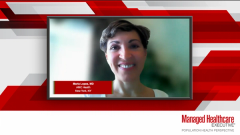
UF Risk Factors
Ayman Al-Hendy, MD, PhD, FRCSC, FACOG, CCRP, elaborates on risk factors for the development of UF.
Episodes in this series

Ayman Al-Hendy, MD, PhD, FRCSC, FACOG, CCRP:One of the most common or obvious risk factors is ethnic groups. African American and Hispanic ethnicities are a risk factor compared with European Americans [in the United States], and women of color across the world have a higher risk. Obesity or increase in BMI [body mass index] is also a risk factor.
We have published on this, which has subsequently been confirmed for many other groups. Vitamin D deficiency is an important risk factor for uterine fibroid. If you’re vitamin D is between 20 and 30 ng, you’re considered vitamin D insufficient. If you’re less than 20 ng, you’re vitamin D deficient, which is a major risk factor for uterine fibroids. There’s an interesting relationship between being pregnant, the number of pregnancies, and fibroid. If you’ve been pregnant multiple times, the higher number of pregnancies is protective against uterine fibroids. We see uterine fibroid to be the highest among those who’ve never been pregnant or who’ve been pregnant 1 time. So pregnancy is a protective factor.
Aging is a risk factor for any tumor. There’s an increased risk of uterine fibroids with age. The peak age for uterine fibroid is late 30s. We see it mostly from mid to late 30s and through the 40s, all the way to the age of menopause. Having heavy menstrual bleeding during adolescence is also a risk factor. Many young women, teen girls, have heavy menstrual bleeding but normalize and start to have normal menses after that. Those who continue to have heavy menstrual bleeding, have a higher risk of developing fibroid later in life.
Finally, estrogen and progesterone are the lifeline for uterine fibroids, so having unopposed estrogen from any source—either a medical source or natural sources, like soy products, which are rich in estrogenic effect—has been associated with increased risk of fibroid. Some hair products, hair relaxers, and so on may have an effect. There’s literature that suggests they have an increased risk of developing fibroid because they have estrogenic components, environmental exposures, etc. These are the most common well-established risk factors.
This transcript has been edited for clarity.
Newsletter
Get the latest industry news, event updates, and more from Managed healthcare Executive.




















































